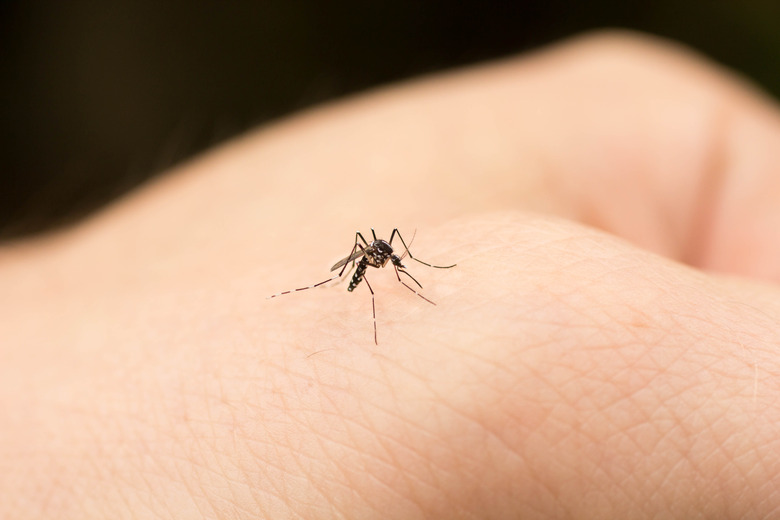Vinegar As A Mosquito Repellent
We may receive a commission on purchases made from links.
Those tiny uninvited flying guests that invade your space are an annoying nuisance, and chemical bug sprays can be just as unwelcome. Using vinegar as a mosquito repellent to deter the winged pests is a folk remedy with no real scientific backing, but it can't hurt to give it a go.
Vinegar as a Mosquito Repellent
Vinegar as a Mosquito Repellent
Some commercial bug sprays can contain potentially harmful chemicals and aren't always preferred for use around children or pets. Natural bug sprays can be effective but also expensive. A mosquito repellent made with vinegar is a relatively easy and inexpensive way to possibly ward off the flitting pests.
Mosquitoes taste with their legs. When they land on something that emits a strong odor, such as vinegar, they take off and don't stick around for a snack.
Apple cider vinegar is preferable to straight white vinegar, which is mixed with water. Mix 1 cup of white vinegar with 3 cups of water and add 1 teaspoon of dish soap to make the solution more effective.
Mosquito Repellent for Skin
Mosquito Repellent for Skin
If you want to avoid DEET but still prefer a scientifically tested repellent, try a product containing picaridin or lemon oil of eucalyptus, following the manufacturer's directions for application.
Other solutions that may work for you include the use of essential oils such as lemon, rosemary, lavender, peppermint, eucalyptus, lemongrass and geranium. Apple cider vinegar is an ideal carrier for essential oils and is gentle enough that it won't irritate your skin. If you use apple cider vinegar on food items, such as in salad dressings or sprinkled over fresh vegetables with salt, you may eventually develop a body odor that naturally repels mosquitoes.
For a homegrown topical solution, mix 1/4 cup of apple cider vinegar with 40 drops of the essential oil of your choice in a small spray bottle. The strong scent of the vinegar can be offset with a strongly scented oil such as rosemary, peppermint or lavender. Shake the bottle well before spritzing the mixture lightly on your skin. Leave the spray bottle close at hand to spritz the air if the mosquitoes dare to get too close.
It is always a good idea to test any product you plan to put on your skin before slathering it on in big batches. Test a small spot on your hand or the inside of your wrist before rubbing the mix on your arms, legs and other exposed areas.
Make a Mosquito Trap
Make a Mosquito Trap
An empty and clean liter or pint soda or water bottle filled with vinegar and baking soda can lure mosquitoes to their early demise. The pests fly into and down the narrow opening of the water bottle and eventually drown.
Cut off the top of the water bottle around 4 inches down and invert it into the bottom half of the cut bottle to create a funnel. Cover the bottle with black paper or black paint, which will disorient the mosquitoes once they've entered the trap.
Pour 1/4 cup of baking soda into the bottle and add a cup of vinegar. The foam will give off carbon dioxide and attract mosquitoes. This only works for a short time, so build a few and place them in small spaces that are mosquito magnets, such as a balcony or porch.
